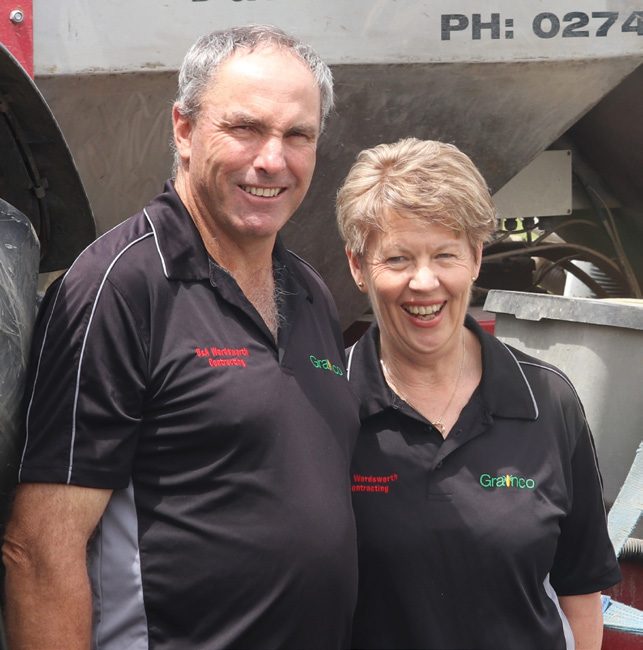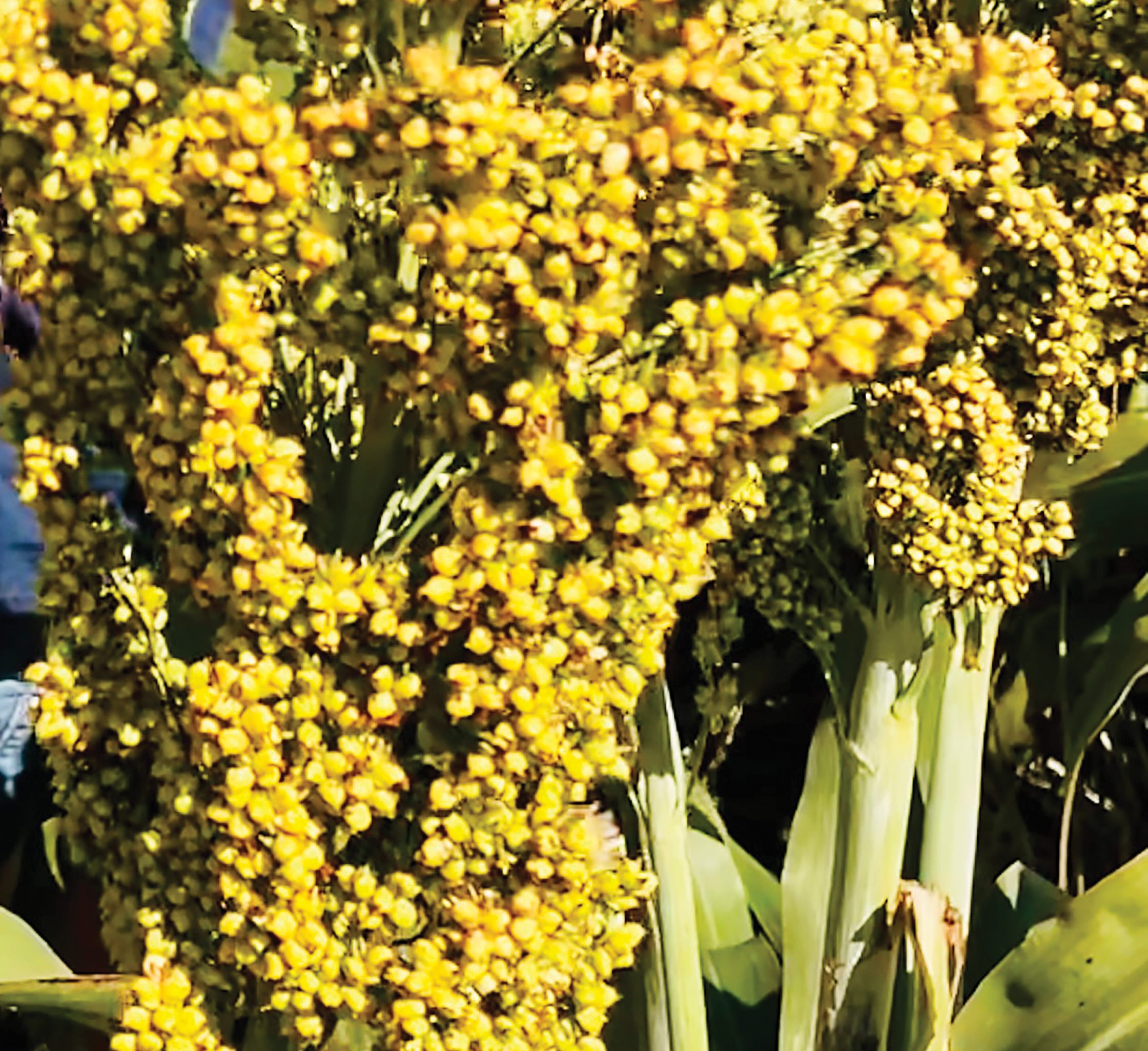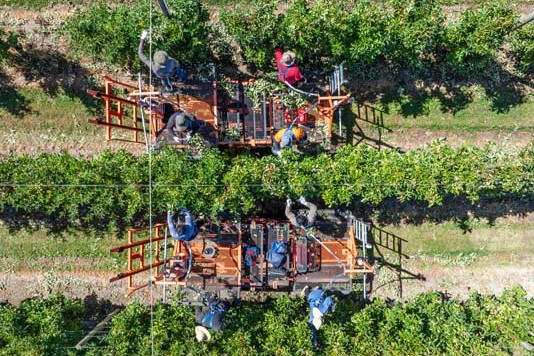Maize on the move
Maize is an important crop for supplements across the country despite challenges of floods and climate change shifting regions and bringing new crops. By Delwyn Dickey.

With its bright green foliage rustling in the breeze and soft-yellow seed heads turning paddocks into a patchwork of colour during summer, maize has been a part of New Zealand rural life for more than 150 years.
With the vast majority of maize grown in the country used as silage in the dairy industry, what does the future hold for this important supplementary crop in a warming climate?
While more extreme weather like flooding and droughts will bring challenges, the future is still looking bright for maize production, maize expert David Densley says.
A private consultant, David is also the senior researcher overseeing maize research with the Foundation for Arable Research (FAR).
The key, he says, will be in changing growing and management practices to make soil and maize crops more resilient to climate changes, looking toward hardier alternatives in some areas, and learning to grow in the south.
When maize was introduced into NZ in the early 1770s it wasn’t a big hit. Certainly, the cooler climate in the South Island proved more challenging. But 50 years later Maori agronomists and growers in warmer Northland, around the Bay of Islands and Hokianga, were planting it in volume alongside large-scale potato and kumara crops, and it has stayed an important commercial crop ever since. As intensification in dairy has increased in the last 30 years, and with it increased supplementary feeding, the market for maize has grown with about 190,000 tonnes of maize grown for silage around the country each year.
And while Northland has lost its top spot as maize capital to Waikato, Bay of Plenty and Hawke’s Bay, nearly 4500 hectares of northern land is planted each year.
Swamp maize
With three years of La Nina weather patterns bringing soggy springs to the North Island and last summer a washout in the north, maize took a hammering. But being resilient in the face of flooding is just a way of life for some farmers.
Every year Evan and Sherleen Smeath plant about 10ha of maize for silage on their Northland farm on the Hikurangi swamp.
Farming on “the swamp” sees flooding a fairly common occurrence even with pump stations and stopbanks set up in the 1970s to help manage it on the 5600ha former wetland.
Some of their techniques are common. Most years they put in two main varieties and a row each of about four different varieties to trial them, all with the same CRM – relative maturity date. If a trial maize goes well, they’ll likely use it the following year.
As insurance, in case flooding should wipe out the crop, they plant the maize in three paddocks in different places around the farm so if one paddock gets knocked out hopefully others will survive.
It’s a strategy that proved its worth this last growing season with the worst flooding the couple have experienced in their 42 years farming on the swamp.
“We had 13 floods in 12 months,” Evan says. Three floods in a year would normally be seen as a wet year.
But their system isn’t foolproof.
“We lost one paddock of maize and a third of another. So, we’re slightly down on maize and having to feed it earlier than we normally would because of the wet – standing cows off.”
While they managed to get the maize off the two good paddocks, wet weather meant they didn’t get the grass seed back in, so now have 10ha that’s like a rice paddy.
“We also got northern leaf blight because it was so wet and humid, so we’re not going to plant maize in those paddocks again. Instead, we’ll plant in red clover, chicory, plantain, a bit of white clover and treat it like a crop.
Then in autumn drill in some permanent pasture.”
Because they’ll now need to reseed about 20ha of pasture in spring because of the flooding, they can’t afford to lose any more pasture by planting maize. Instead, they will grow all their maize off the farm this coming season. With so many local farmers in the same boat good quality land for maize is at a bit of a premium.
While a lot of people are offering up land, Evan reckons much of it won’t be worth taking on as it is poor-quality to start with, which will see lower maize yields.
“They want you to level it all up and make a beautiful paddock, but you won’t break even with a maize crop.”
The going rate is $1000-$1500/ha on a beef unit Evan reckons for about the eight and a half months you’ll be using the land. That means spraying out the paddock in mid-September with grazing again by the following May.
“But if you’ve got to do extra work to use it – like digger work or drainage or levelling it’s not as valuable to you and the price drops off,” Evan says.
Evan has been lucky and found a beef farmer 25km away who wants some paddocks freshened up.
Because the beef farmer doesn’t have the gear to grow the maize himself this is a good option for him, Evan says.
“He will make a bit of money off it, get some good fertiliser on it, get it levelled and back into good grass at the end.”
Soggy soils – low yield
Further west at Dargaville David and Adrienne Wordsworth also had issues with the wet summer with maize yields well down.
Running a beef and cropping farm they grow 50-70ha of maize grain each year. They are also maize contractors in the area, and grain merchants.
Having taken out many of the categories in this year’s Ballance Farm Environment Awards for Northland, they were also winning maize growers of the year at the NZ Arable Awards, so know a thing or two about good practice.
“We got the maize in and it came up really nicely. Then it started raining at the beginning of November, and it sat in water for weeks,” David says.
“This saw it go yellow and because it didn’t grow as well it didn’t get the canopy cover, which saw more weeds.”
They farm close to the Northern Wairoa River which breached its stopbanks flooding surrounding farmland during Cyclone Gabrielle in February.
This also knocked a lot of their crops although not as severely as on some farms.
Yield was about 4t/ha down on the normal average of 11t, he reckons.
The district average was about 8t/ha with one grower he knows who normally averages about 12-14t, doing just 5t this year.
Building resilience
“It’s hard to make farms more resilient to flooding,” David Densley says.
“Healthy soils will drain a bit better, but that’s a relatively small thing. In a flood there’s nothing you can do.”
But too little water during the warmer months is more of a problem in the north than too much.
“More research is underway looking at how to store more of the rain that falls in winter in the soil, to carry us through the summer. Building more resilient soils.”
Reducing tillage with maize production is one way to do that with some farmers in the north already doing no-till maize. Strip till is similar but sees a thin strip about 15cm to 25cm wide cultivated and planted, with fertiliser able to be laid in the strip at the same time.

David and Adrienne Wordsworth have been growing maize for 27 years on their clay soils which are notorious in the north for drying out in the warmer months. About 12 years ago they changed to a no-till system from full cultivation, after they became worried about the effect cropping was having on their soil quality, especially losing soil moisture in summer.
While David appreciates the time it saves him only having to do a single pass with the tractor to drill the seed, it is the savings in diesel that has impressed him the most.
“The savings were massive. That first year we saved something like $10,000 in diesel.”
A no-till system is also more flexible working around the weather, he reckons.
“If you have soil worked up and then have a whole lot of rain it’s a big soggy mess. With no till if it does rain – depending on the soil type – you can be out planting the next day on the sandy soils or a couple of days for other soil types.”
They have also moved into growing cover crops after maize during winter.
These crops soak up excess nutrients like nitrogen. Constantly having roots in the ground also binds the soil together protecting it from rain and wind, against erosion in flooding, while ensuring soil microbes and worm numbers remain high, making for healthier soils.
David reckons he’s tried all sorts of cover crops including cereals, grass and legumes like fetch and lupins. He’s found beans to be the easiest to grow and can handle the weather conditions better.
After about four years, David says the soil was noticeably blacker with more organic material, and able to retain water better. The maize also performs much better in the drier months and hangs on a lot longer than it used to in a drought.
When they first started doing no-till David admits some people thought they’d gone mad – that it won’t work.
Now about 80% of their work is no-till and they’re doing 400-500ha a year.
“Out on the coast pretty much all the dairy farms are no-till now, because of the wind erosion and sandy soils. Some of our farmers have their own planters and have also set them up to do no-till, just relying on us for harvesting.”
Different soils, more sampling
Different soil types see different nutrient uptake and pH levels. These can vary a lot even across a single paddock, and will affect how well maize will grow in any given spot.
Getting a good handle on soil variations also gets the most value out of inputs, with David among a growing number of contractors doing grid soil sampling.
Instead of one pH sample per paddock, or perhaps 15 samples taken and then mixed together before testing to get an average, David takes a sample per hectare in the paddocks and these are tested separately with their positions in the paddock recorded. With the paddocks ranging from 4ha to 12ha, it’s a big job although they only get done every three years, to see if their management is improving water retention in the soil.
Along with the tractor, the tech helping David includes a smart planter, a smart fertiliser spreader, and grain combines/forage harvesters able to map yield as well.
He also uses normalised difference vegetation index (NDVI) at times, which uses satellite data to show which areas within a paddock have the most growth. This all means lime and fertiliser can be applied precisely in the paddock in the areas that need it most, instead of blanket applications. It also means he is able to put in more plants in areas which retain water better and less plants in lower water retention areas – while on the go. This is common now with most big growers around the country using this variable rate planting.
“The margins are being squeezed on everything so we need to be more efficient,” he says.
“The same with precision fertiliser. It ensures you’ve got everything that will give you the best bang for your buck, and use it wisely. The plant gets enough without wasting it.”

Grain sorghum
But the demise in maize growing isn’t the end of dairy silage in the north.
A more robust option is already being used as silage feed for the dairy industry in Texas and Florida in the United States, and is also widely grown in Australia.
Grain sorghum will be better suited to Northland than maize, David says, although it’s important to point out that grain sorghum is different to the forage sorghum already grown here and which growers would be familiar with.
Having spent many hours harvesting grain sorghum on his parents’ farm in New South Wales when he was younger, David knows it well.
“It’s a much more resilient plant and also needs warmer soil temperatures than maize. It has lower yield potential, but doesn’t require the same amount of water, and has about 80% of the feed quality,” he reckons.
“In a drought, it can be dry enough that you get nothing with maize, while with sorghum you’ll likely get something – even in a harsh drought.”
Grain sorghum seed can’t be bought off the shelf in this country, but Pioneer NZ is the same company as Pioneer Australia who grow hybrid grain sorghum, David says.
There would be some requirements around biosecurity, but there is the potential for grain sorghum seed to become available in NZ.
Southern climes beckon
The warming climate is also making maize an attractive option in the South Island.
“If we have 130 frost-free days, we can grow maize. In the past there might be a rogue frost in January or February, so it was too risky. But the chance of that happening now is less and less. Maize is absolutely heading south,” he says.
In Southland about 250ha of maize silage is grown annually while Canterbury is already closing in on Northland with more than 3000ha annually.
“Maize plants collect the heat during the summer which drives their maturity as it goes through its growth phase.”
As you head south the summer is shorter, so the management of the crop may need to change compared to the north for optimum production.
“To get the most out of that shorter season you want to capture as much solar radiation as you can,” he says.
This is behind research underway in Canterbury by FAR looking at narrower spacings between the rows to catch as much light as possible while the plants are small.
Fellow FAR researcher Owen Gibson is overseeing the trials.
In the north the rows are spaced at 76cm but they are trialling rows at 38cm, using standard long-maturity maize rather than the shorter-maturity hybrids.
“After we’ve planted and the maize is out of the ground in about seven to eight days, every bit of sunlight hitting the ground after that is wasted. Plants in narrow rows can intercept more of that light and you reach canopy closure sooner, and turn that into yield,” David says.
While it’s looking promising there are still another couple of years of work before they will be sure enough to advise farmers one way or the other, he reckons.
“The science has to be robust because contractors and farmers, who own their own maize planters have got the standard 76cm row width. If you’re telling them they need to sell them or replace them when they wear out with something else, you’d better have the science to say that it is a good thing to do. So, this is a work in progress.”
The acid test
David Densley is keen to emphasise the importance of knowing the pH of the soil.
“A healthy plant will take up more nutrients and this comes down to the pH of the soil,” he says. “The pH will overrule everything else growers do for resilience.”
The optimum pH for maize is 6.2. While going up to 6.4 won’t have an impact on yield, going below 6.0 will – impacting on the plants’ ability to take up nutrients – even though it may not be obvious to a farmer by simply looking at the crop.
Applying this knowledge and these technologies will give us more resilience in the future, he says. “But they are not a miracle cure for drought.”
During a drought the crop will still be impacted, but these tools will reduce that impact. As a tropical plant maize loves the heat, but it also needs good soil moisture.
The most vulnerable time for a maize plant is over the flowering period – it’s reproductive stage.
“The maize we most often grow are normally flowering over the hottest and driest part of the year – typically they flower mid-January,” David says.
Using short maturity maize hybrids which flower and set seed a week or so earlier is another tool in the tool kit.
While they potentially have a lower yield, maize hybrids will have already passed through that vulnerable stage before the hottest and driest part of summer starts.
Despite these tools he thinks increasing temperatures in Northland will likely make commercial maize growing non-viable in 10 to 20 years.





